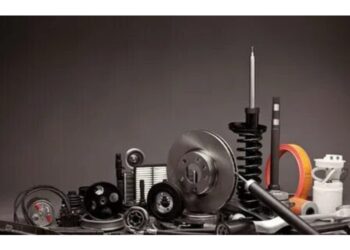Electric tractors represent a transformative leap in agricultural technology, blending the promise of sustainable practices with the demands of modern farming. As nations grapple with the twin challenges of increasing agricultural productivity and reducing carbon emissions, electric tractors emerge as a key player in the green revolution. By integrating renewable energy sources, cutting-edge battery technology, and smart manufacturing practices, these machines are not just an innovation but a necessity for the future of agriculture.
Global Policy Support and Market Growth
In recent years, policy frameworks worldwide have begun to favor the development and adoption of electric tractors. The European Union’s Green Deal aims to achieve net-zero greenhouse gas emissions by 2050, providing substantial incentives for the electrification of agricultural machinery, including a $100 billion allocation for clean energy initiatives. Similarly, India’s Faster Adoption and Manufacturing of Hybrid and Electric Vehicles (FAME) scheme has expanded its scope to include agricultural vehicles, allocating subsidies and tax benefits amounting to $1.4 billion to promote electric tractors. The United States, through the Inflation Reduction Act of 2022, earmarked $369 billion for clean energy projects, a portion of which targets the electrification of agricultural equipment. China, the world’s largest producer and consumer of agricultural machinery, has also introduced a $12 billion green agriculture initiative that includes subsidies for electric tractors.
Manufacturing Advances and Cost Efficiency
On the manufacturing front, advancements in battery technology have played a pivotal role in making electric tractors a viable alternative to their diesel counterparts. Lithium-ion batteries, known for their high energy density and longer lifespan, are the preferred choice for most manufacturers. Companies like Monarch Tractor in the U.S., Escorts Limited in India, and Kubota in Japan are leading the charge, producing electric tractors that boast operational cost savings of up to 70% compared to traditional tractors. Monarch’s MK-V model, for instance, offers a battery life of up to 10 hours on a single charge and can be charged using solar energy, further reducing dependency on fossil fuels.
Furthermore, electric tractors often feature autonomous capabilities, leveraging AI and IoT for precision farming. These tractors can perform real-time soil analysis, automate irrigation, and optimize planting schedules, reducing labor costs by up to 30%. A 2023 report by Allied Market Research estimates that the global electric tractor market will grow at a compound annual growth rate (CAGR) of 14.8%, reaching $6.5 billion by 2030, highlighting the sector’s rapid expansion.
Economic and Environmental Benefits
Adoption, however, remains a complex challenge, influenced by factors such as cost, infrastructure, and farmer awareness. While the upfront cost of electric tractors is higher than conventional models—ranging from $40,000 to $80,000 compared to $25,000 for diesel tractors—long-term savings on fuel and maintenance make them economically attractive. A study by the International Renewable Energy Agency (IRENA) in 2022 revealed that farmers could save approximately $2,000 annually in operating costs by switching to electric tractors. Additionally, electric tractors have fewer moving parts, reducing maintenance costs by up to 50% over their lifetime.
The environmental impact of adopting electric tractors is profound. Agriculture is responsible for nearly 10% of global greenhouse gas emissions, with a significant portion attributed to diesel-powered machinery. Transitioning to electric tractors could reduce emissions by approximately 40%, according to a study by the Food and Agriculture Organization (FAO) in 2021. Moreover, the integration of electric tractors with smart farming systems enhances resource efficiency, reducing water and fertilizer use by up to 20%.
Overcoming Adoption Barriers
The lack of widespread charging infrastructure in rural areas remains a significant barrier to adoption. Governments and private players are addressing this gap by introducing portable charging stations and integrating renewable energy sources like solar panels into farming setups. For example, India has launched a pilot project installing 10,000 solar-powered charging stations in rural areas, while the U.S. Department of Agriculture (USDA) has allocated $100 million to expand rural electric vehicle infrastructure. Additionally, awareness campaigns and pilot projects, such as the “Green Farms Initiative” in Europe, are crucial in demonstrating the tangible benefits of electric tractors to farmers.
Conclusion
The rise of electric tractors is more than just a technological shift; it is a linchpin in the broader movement toward sustainable agriculture. Policies are aligning with manufacturing advancements to create an ecosystem that supports the adoption of these vehicles. While challenges persist, the economic, environmental, and operational benefits make electric tractors an indispensable tool in achieving a greener, more efficient agricultural future. With continued investments in infrastructure, research, and policy support, electric tractors are poised to redefine farming for generations to come.












